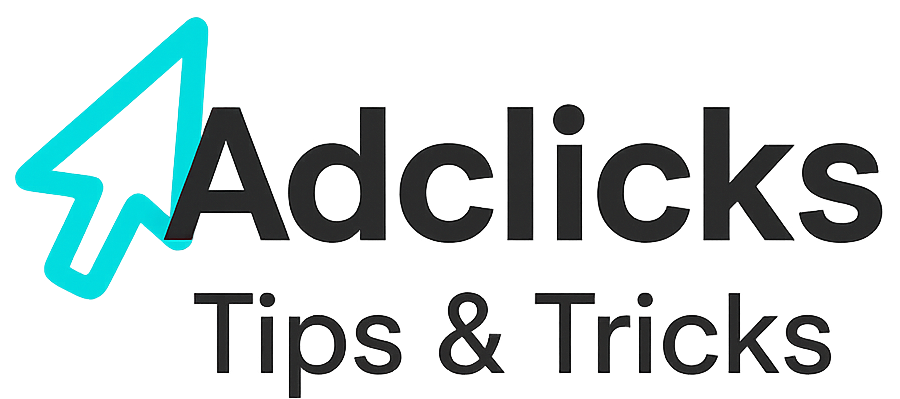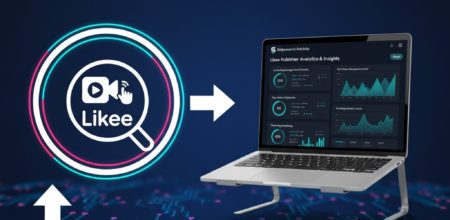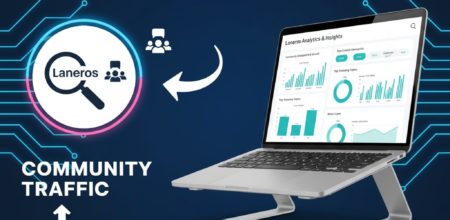Discord began as a voice chat and messaging platform mostly for gamers but has evolved into a broader community hub with “servers” (topic-based groups) where people communicate via text, voice, video, and channels.
As of 2023–2025, it has roughly 200 million monthly active users and over half a billion registered accounts. A large share of those users are young adults: the dominant age ranges are 18–24 and 25–34. The gender split skews male (~65% male, 32–35% female) in many metrics.
Discord sessions are relatively engaging. In June, it recorded 744 million visits with average visitor durations around 17 to 18 minutes and ~7 pages visited per session. The bounce rate is moderate (~50%) indicating many users dive into servers and explore.
From a traffic source perspective, much of Discord’s traffic is direct, not driven by search or external links. This reflects how users often open Discord by app or bookmark rather than via web searches.
Overall, Discord’s user base is:
- Young adults (18–34) with digital fluency
- Heavily skewed male, but increasingly mixed groups
- People seeking community, discussion, niche interest groups (gaming, tech, crypto, education, hobbies)
- Users who spend time within server communities rather than casually browsing
This makes Discord ideal for publishers whose content fits into niche communities, especially around topics like gaming, tech, software, learning, crypto, productivity, creative arts, or digital tools.
Community Culture and Expectations
Discord’s culture emphasizes real-time interaction, trust, moderation, and community norms. It is not a billboard: overt self-promotion or spam is usually frowned upon in active servers. For a publisher to gain traction, it’s essential to earn credibility first.
In many servers, content creators, moderators, or subject-matter experts contribute value (helping, answering questions, sharing resources) before ever linking out to their sites. When links are shared, they tend to be:
- Inside resource/documentation channels
- In events or Q&A sessions
- In pinned messages or server “good deals / recommended resources” channels
- Via bots that respond on command to user queries
You’ll find servers tagged “affiliate marketing” or “internet marketing” where members share affiliate campaigns, deals, or monetization tips. Some servers have tens of thousands of members centered around affiliate marketing, e-commerce, or digital business.
The tone matters: users value transparency (“this is an affiliate link”), relevance, and non-intrusive sharing. Using bots for automation helps, but bots should complement—not replace—human engagement.
Because of this, a publisher entering Discord should plan to give more than they take at first—help, moderate, share insights—before leaning on promotions. That builds trust, which ultimately drives clicks, conversions, and revenue. And yes, you can link to your site or affiliate offers (e.g. via Adclicks) if it’s relevant and disclosed.
What Types of Websites Fit Well
Not every website works equally on Discord. The best fits are those that align with Discord users’ interests and behaviors. Here are ideal categories:
- Niche technical content: software, tools, tutorials, plugins, dev resources
- Gaming / esports: guides, hardware reviews, mods, add-ons
- Crypto / blockchain / NFTs: community is active on Discord for such topics
- Learning / digital courses: coding, design, productivity tools
- Creative arts & media: music, art, video content, communities
- Deals / tools / SaaS: discount offers, extensions, software utilities
These types of websites align with communities already active on Discord. A blog about gardening may struggle unless it builds a niche server and draws a community explicitly interested in gardening topics.
Moving Users From Discord to Your Website
Discord is different from platforms like Facebook or Twitter where you can broadcast a link and expect some clicks. On Discord, communities value authentic participation, and if you post links without context, they’ll be ignored or deleted. The way to get users to your site is to make the link feel like part of the discussion.
The best strategy is to answer questions first. If someone asks for advice, you can reply with a short helpful explanation, then add: “I actually wrote a step-by-step guide that covers this in more depth, here if you’d like: [link].” Because the link extends your answer, people treat it as a resource, not an ad. You’re effectively positioning your site as an extension of the conversation.
If you’re managing your own server, create dedicated channels such as #resources, #guides, or #helpful-links. These are areas where sharing links is expected, which means users can browse them when they want something deeper than chat replies. Over time, regular members will get used to checking those channels for your content. That’s where you can include links to content pages that already feature campaigns. The user gets the resource they came for, and you capture the value through Adclicks.
To go a step further, you can use server events, workshops, or live AMAs. For instance, host a Q&A in your server about a trending topic, then at the end, share a link to a detailed breakdown on your site. Because the audience is engaged in real-time, your call-to-action has higher weight. Once again, make sure those destination pages are supported by Adclicks placements so every visitor session is monetized.
Designing Landing Pages for Discord Traffic
When Discord users click through, they should land on a page that feels like a natural continuation of the conversation they just had. Dropping them on a homepage forces them to search for relevance, and most will leave. Instead, match the headline and content to the context.
For example, if the Discord chat was about “beginner’s PC building,” the landing page headline should be “Step-by-Step Beginner’s PC Build Guide.” Visitors immediately see they’re in the right place. The content should be short, visual, and easy to scan — much like a chat exchange but more structured.
On these pages, it’s not up to the webmaster to pick individual ads. Instead, you create proper ad placements in the required sizes, and Adclicks automatically fills those slots with the right offers for the visitor. This means you should design the page with space for those placements — above the fold, within content, and near natural breaks — so the ads flow with the article. The value to the user is the guide itself, while Adclicks ensures the right offers appear dynamically based on targeting and tracking.
Because many Discord users are browsing on mobile, make sure your landing pages load quickly and adapt seamlessly. A small line like “Thanks for coming over from Discord — here’s the full guide” creates familiarity and keeps users engaged long enough for Adclicks ads to register impressions and potential conversions.
Traffic Potential & Risk Balance
Discord is not a pure “traffic acquisition” platform in the classic sense; it’s a community and discussion network. Most traffic comes from direct links within servers, and the impact is often incremental but engaged.
Because sessions on Discord tend to be deep and interactive, users clicking a link are more likely to convert—if the landing page and offer match expectations.
But there are risks:
- Servers may ban overt promotion, so your strategy must be subtle
- Discord users expect authenticity; pushy links may get removed or cause backlash
- Link drops without context rarely perform well
Still, for publishers who align closely with server themes, the yield can be meaningful. And if you tie those links to affiliate channels (e.g. Adclicks-powered links), even modest volume can translate to revenue.
Audience & Geographic Considerations
Discord’s traffic is global. The largest share comes from the United States, followed by Brazil and India. Because many Discord users are non-native English speakers but comfortable in English tech discourse, offering multilingual content or local resources can expand your reach.
Given the age skew (18–34) and interest in tech, gaming, creative, and digital tools, your content should be modern, visual, and focused on utility. Use images, embedded media, tutorials, and interactive content.
Because many users are from tech-savvy regions, your site should be fast, mobile-friendly, and trustworthy. A slow landing page or broken affiliate link kills trust in seconds.
Action Plan: How to Use Discord to Drive Revenue
Here is a simplified 5-10 step plan you can follow:
- Define your niche and topic aligned with Discord communities (e.g. dev tools, gaming, crypto).
- Start or join servers with active users in that niche. Contribute meaningfully before posting links.
- Set up bots / commands that map keyword triggers to your site content or affiliate pages.
- Create a pinned resources/links channel to host your best content and affiliate offers.
- Host live events or AMAs and drive participants to a relevant landing page or guide on your site.
- Link transparently, always disclose “affiliate link” where appropriate (including Adclicksif used).
- Use landing pages built for Discord traffic, welcome users, offer bonus content or freebies, then lead into your monetized offers.
- Monitor link performance (clicks, conversions) to see which servers, bots, or channels drive results.
- Refine your funnel — adjust messaging, page layout, or offer sequencing to improve conversion.
- Scale gradually, expanding into more servers, increasing bot reach, or collaborating with server owners for cross-promotion.
Relevant Links
- Support: https://support.snipesearch.co.uk/
- FAQ: https://adclick.snipesearch.co.uk/index.php?page=index/faq
- Contact Form: https://adclick.snipesearch.co.uk/index.php?page=user/support
Stay Connected
- Snipesocial: https://www.snipesocial.co.uk/pages/snipesearch
- Twitter: https://twitter.com/snipesearch_uk
- Facebook: https://facebook.com/snipesearch
- LinkedIn: https://linkedin.com/company/snipesearch/
- VK: https://vk.com/snipesearch_uk
- Focus: https://focus.xyz/snipesearch
- YouTube: https://youtube.com/@snipesearch
- diaspora: https://diaspora.snipesearch.net/people/7431fcf0806c013e936e00163c6e7bdf
Analytic Tools
- Rommie Visitor Analytics: https://rommie.net/
- StatCounter: https://statcounter.com/




